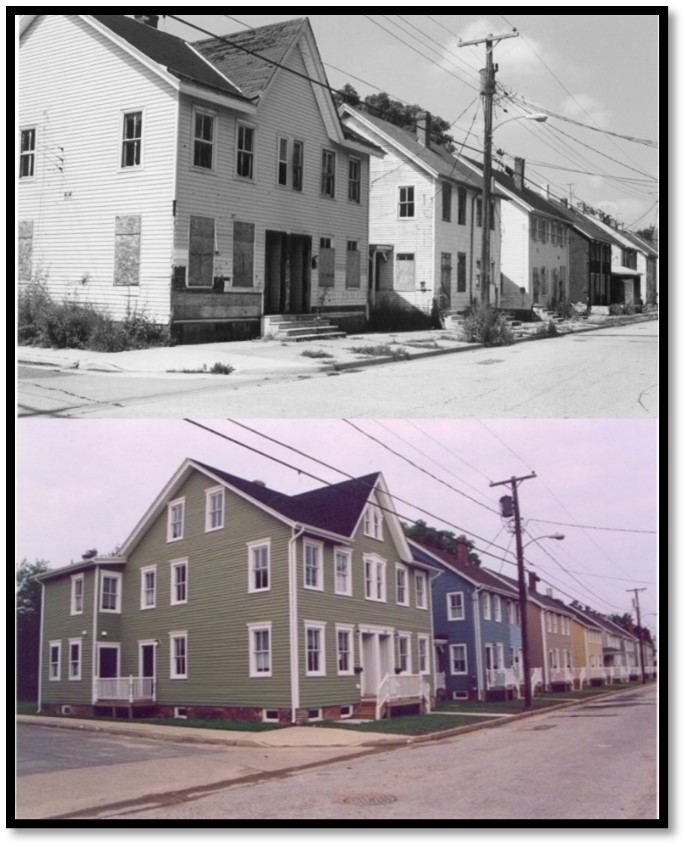HISTORIC PRESERVATION: SALEM CITY
Case Study: Hedge Carpenter Thompson Historic District
Salem City, Salem County
OPPORTUNITY/CHALLENGES
It was 2000 and the values of homes in Salem City had been on the decline for several decades when city leadership decided it was time to look at potential development opportunities. The small town of less than 6,000 ranked as one of the lowest in the state in terms of income per-capita and its resources were limited. The state of the area was described as nearly unlivable with half of homes left vacant, abandoned, or burned, in addition to high rates of crime, absent landlords, and illegal dumping plaguing the district.
PARTNERS
Pennrose Properties developers were selected to discover potential development opportunities in the city under a public-private partnership. They were essential as a partner in this effort because of their experience in preserving historic districts and leveraging resources. It was ultimately Pennrose that decided the Hedge Carpenter Thompson Historic District was a worthwhile project for rehabilitation within Salem City.
ACTION
The redevelopment plan called for the historic rehabilitation and new construction of rental housing on vacant dumping grounds and burnt-out properties within the area. Since the project was a major historic rehabilitation effort, Pennrose Properties made it a priority to get the Carpenter Street neighborhood listed on the National Register of Historic Places by identifying the various historic structures within the district, many of which were built between 1890 and 1920. Doing so allowed the developers to take advantage of the Federal Historic Rehabilitation Tax Credit program.
FUNDING/RESOURCES
The city received grant funds from the USDA’s Rural Cities program and from NJDCA’s Small Cities grant program for the restoration of the water and sewer systems as well as the reconstruction of the streets, curbs, and sidewalks. Since the area is a historic district, developers were also able to use the Federal Historic Rehabilitation Tax Credit program, which provides a 20% tax credit on qualified expenses of rehabilitating historic properties listed on the National Register of Historic Places in accordance with the Secretary of the Interior’s Standards for Rehabilitation. They were also able to use low-income housing tax credits to subsidize their efforts.
RESULTS & BENEFITS
By the time of completion in 2005, the Salem Historic Homes project produced 104 new apartment units and increased the occupancy rate in the district to over 80 percent. The project improved real estate sales in adjacent neighborhoods and vacancy rates on Main Street as well. This project exemplifies what can happen when a community recognizes its valuable historic resources and leverages its history to provide economic and environmental benefits through creatively combining financial resources and partners.

More Stories Like This: